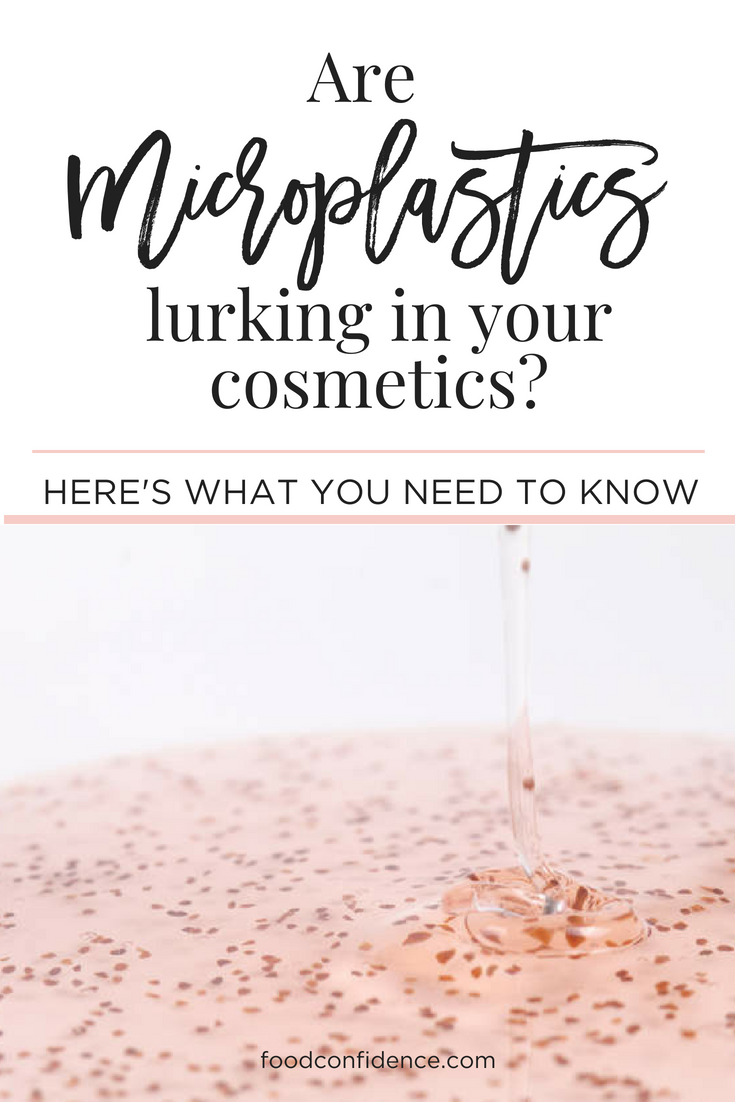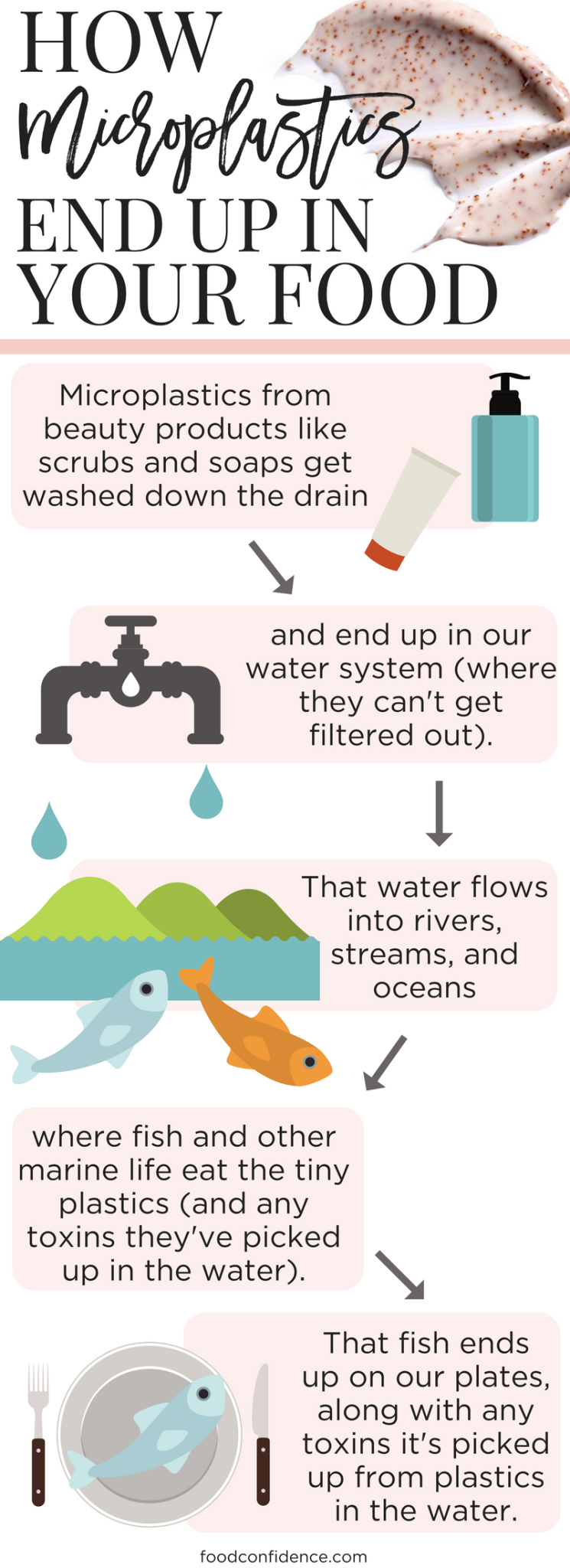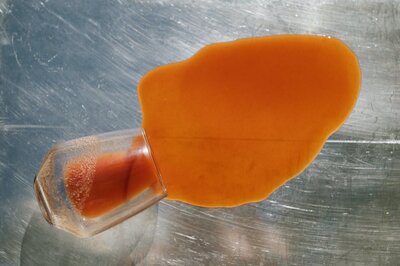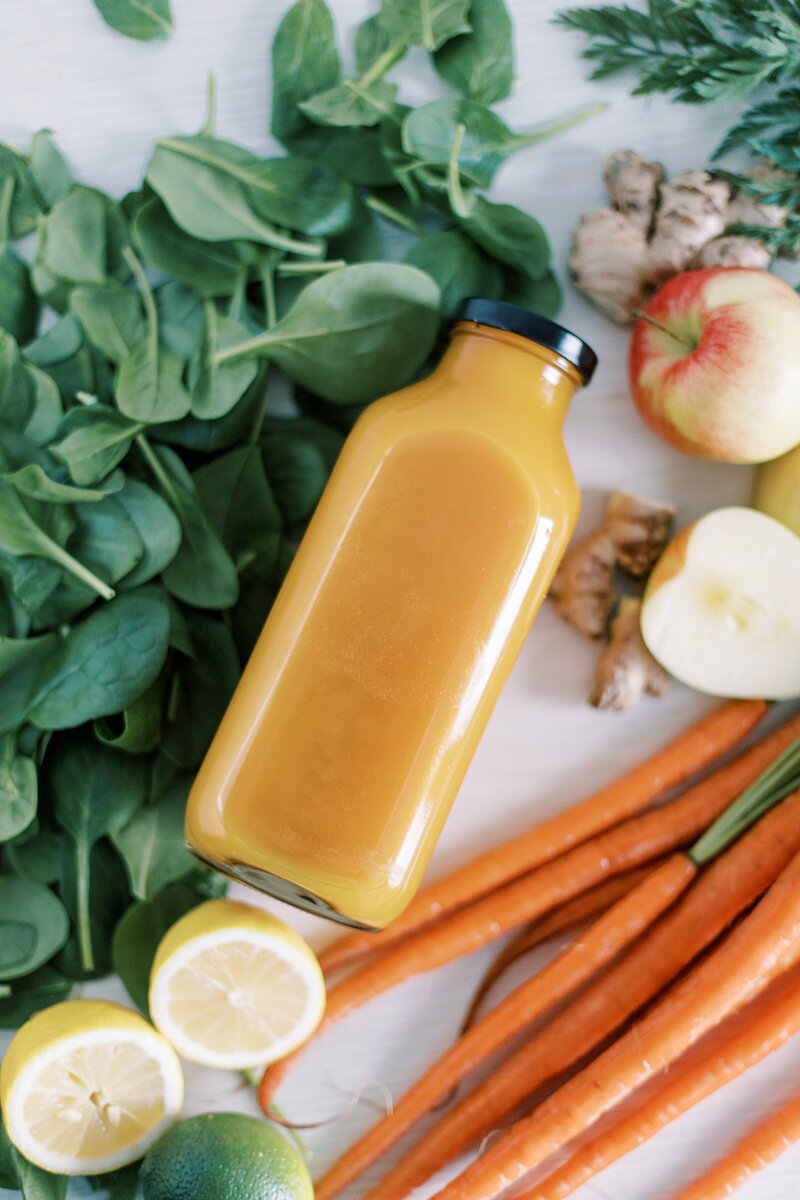

It’s crazy how the tiniest things can have such a big impact. I’m talking super tiny things like microplastics….the miniscule plastic beads and other plastic ingredients found in skincare products like exfoliators, scrubs, soaps, and toothpaste.
You may have heard that microplastics like microbeads are a hot topic in the natural living world because they’re a cause of concern for the environment, marine wildlife, and our health. And despite Congress taking action to ban microbeads last year, we still have a long way to go before all microplastics are removed. There are actually more than 60 different microplastic ingredients currently used in cosmetics. You’ll find microplastic ingredients not only in exfoliators and scrubs, but also in products like lipstick, eyeliner, and sunscreen.
What are microplastics?
Microplastics are created when large plastics are broken down in the environment into smaller pieces. Microbeads are tiny pieces of plastic, less than a millimeter in size, that are commonly added to scrubs and toothpastes to create a grainy texture for exfoliation. They’re made from the very same plastics you find in plastic bottles and other containers, just in nearly microscopic form.
How do microplastics affect the environment?
I don’t know about you, but I love my exfoliator. There’s nothing better than a good face or body scrub to feel refreshed and renewed! And when you wash your exfoliator off of your face and body, you probably don’t think too much about where the exfoliator goes next. It dissolves into the water and goes down the drain just like soap. So what, right?! Well, if your exfoliator contains these microbeads, you’re actually sending almost 100,000 tiny plastic beads down the drain. And those plastic beads don’t disappear – they just relocate.
Plastic microbeads are small enough to pass through water treatment facilities, so they end up flowing straight into our rivers, lakes, and oceans. When these tiny plastic beads flow into waterways, they can absorb toxins and chemicals. And when worms, fish, frogs, and turtles mistake them for food, they end up inside their bodies. That means that these tiny plastic pieces, along with all the toxic sludge they’ve collected in their travels, are ingested by marine life (posing a threat to them) and then enter our food system (posing a threat to us).
What are the health risks of microplastics?
Once microplastics make their way into the water, it’s pretty easy to see how they can end up in our food system. Microplastics pick up other toxins that flow into the water (like pesticides and other chemicals heavily used in the environment), get ingested by marine life, and then work their way up the food chain to end up in our food supply. So when fish get a dose of plastic and toxic chemicals, we do, too (if we eat fish)!
How bad is the situation? In 2012, scientists from 5Gyres, an organization that researches the impact of plastic in waterways, found lots of microbeads in the Great Lakes, sometimes more than 600,000 per square kilometer! The Beat the Microbead campaign has helped influence many companies to steer clear of microbeads, but with a single tube of face scrub containing up to 3 million microbeads, they’ve already infiltrated our waterways.
Is it safe to consume these plastics? Your guess is as good as mine, friends. Although studies have shown there are microplastics present in food, it’s unclear what the long term health effects are when we eat them. In fact, very few studies have examined the affect of microplastics on human health and disease. You would think that manufacturers would need to prove plastics are safe before using them, but unfortunately, that’s not how it works. Very few human studies examining the health effects of microplastics currently exist.
How can I tell if a product contains micropastics?
Microplastics can be hidden pretty deep in the ingredients list of your favorite beauty products (along with lots of other chemicals you don’t want on your skin), but you can spot them by looking for these ingredients:
- Polypropylene (PP)
- Polyethylene (PE)
- Polymethyl methacrylate (PMMA)
- Polyethylene terephthalate (PET)
- Nylon (PA)
An obsessive skin-care-label-reader myself, I know it can get confusing (and time consuming!) standing in the skin care aisle at Target trying to read the tiny print on labels, so the folks over at Beat the Microbead can help you figure out whether your favorite brand is free of microbeads.
Wait, I thought microbeads were banned?
Yes and no. The United States Congress passed a law banning the use of microbeads in health and beauty products (a huge step!), but many other countries still rely on voluntary commitments from companies, rather than regulating the use of microplastics in products. Even with microbeads being banned in the United States, you’re still going to want to check those labels. Congress’ initiative, along with other initiatives in the UK, France, Canada, and more focus exclusively on microbeads, rather than microplastics as a whole.
Another factor to consider is that the U.S. banning microbeads doesn’t mean your food supply is free of microbeads and their associated toxins. A lot of our seafood is imported from waters near Asia, where microplastics could still be floating around in the water. Plus, the bodies of water that border the U.S. and other countries may not ban microbead use. This is a global issue, and while banning microbeads in the U.S. is a major step, getting microplastics out of our skincare products is a larger-scale issue. You can help by choosing products without any microplastics! Do this by looking for this label on your skincare products or by checking for these ingredients.


The microplastic-free products I swear by:
What’s my secret to avoiding microbeads in beauty products? I only buy from brands that are committed to our health and and marine life.
Most of my skincare and makeup is from Beautycounter. Beautycounter is committed to transparency in their manufacturing practices and their mission is to create safe, effective beauty products that are better for you AND the environment. It helps that their products are top-notch quality and they work. I use this Nourishing Cream Exfoliator, which uses beads made from natural, biodegradable materials like jojoba wax and sugar.
Other natural beauty companies like these may use crushed nut shells and cocoa beans or beads made from rice and bamboo…these are safe, too. With great options like Beautycounter and these others available to us, there’s no reason not to get microplastics out of your beauty routine for good!






